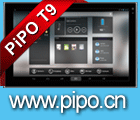Duratouch Wristsense allows wearables to detect if the wearable is being worn or not. Going through the plastics, it allows to reliably know if the smartwatch or the sports band is being worn, which can then allow the device’s software to turn off other sensors such as heartrate, tracking, when it’s not being worn by the user.
Category: Tradeshows
HiCling clingband uses UICO Duratouch wristSENSE to detect when it’s being used
Firstbeat: Heartbeat Monitoring for Fitness and Wellbeing
An interview with Firstbeat at the IDTechEx Wearable USA exhibition. Firstbeat is a provider of physiological analytics for sports, fitness and wellbeing. Firstbeat technology measures the heartbeat for insights on exercise, stress, sleep and recovery. For more information, visit http://www.firstbeat.com and http://www.IDTechEx.com
Würth Elektronik: Motion Energy Harvesting Demo
A video interview with Würth Elektronik, taken at the Energy Harvesting & Storage USA exhibition. Würth Elektronik eiSos GmbH & Co. KG is a manufacturer of electronic and electromechanical components for the electronics industry. The product range covers EMC Components, Capacitors, Inductors, RF Inductors and LTCC Components, Transformers, Components for Circuit Protection, Power Modules, LEDs, Connectors, Switches, Power Elements in Press-fit Technology and Assembly Technique.
Xenon Corporation at Printed Electronics USA
A video interview with Xenon Corporation, taken at the Printed Electronics USA exhibition. XENON’s equipment uses Pulsed Light technology for industrial, medical and research applications. In the Printed Electronics industry, XENON’s S-Series systems are used to sinter conductive inks at room temperature, making it possible to print on heat sensitive flexible substrates such as PET and paper. XENON also produces high-performance Pulsed Light systems for applications in sanitization, UV curing and food enhancement. For more information, visit http://www.xenoncorp.com and http://www.IDTechEx.com
BitWearLabs Wearable Sensor System for Monitoring Food Intake
A video interview taken with Muhammad Farooq of The University of Alabama at the IDTechEx Wearable USA event, presenting his poster “A Wearable Sensor System for Monitoring of Food Intake”. BitWearLabs is a University of Alabama spin-off. The AccuBite is a food intake tracker that analyses eating habits – the sensor pairs with a smartphone app to provide actionable feedback. For more information see http://bitwearlabs.com and http://www.IDTechEx.com
BitWearLabs “Smart Step” Insole Activity Monitor
An interview with BitWearLabs at the IDTechEx Wearable USA exhibition. BitWearLabs is a University of Alabama spin-off. Demo of two of BitWearLabs products, the AccuBite and the SmartStep. The AccuBite is a food intake tracker that analyses eating habits – the sensor pairs with a smartphone app to provide actionable feedback. The SmartStep is an insole-based activity monitor that discreetly tracks the wearer’s steps, yielding an accurate picture of calories burned. For more information see http://bitwearlabs.com and http://www.IDTechEx.com
HZO Waterproofs Electronic Devices: Interview at the IDTechEx Show!
Interview with HZO at the IDTechEx Wearable USA event. HZO provides technology solutions that protect electronics from corrosion and extended liquid immersion. A durable thin film is applied directly to the components of a device, creating a physical barrier between the vital circuitry and any kind of corrosive liquid. For more information see http://www.HZO.com and http://www.IDTechEx.com
RheoSense Viscometer Demo at Printed Electronics USA
Interview with RheoSense, Inc. at the Printed Electronics USA event. RheoSense manufacture viscometers: m-VROC & microVISC instruments which feature Viscometer/Rheometer-on-a-Chip (VROC). For more information see http://www.rheosense.com and http://www.IDTechEx.com
Rodman Media Predict that Printed Electronics, IoT, and 3D Printing will become Ubiquitous
nterview with Dave Savastano of Rodman Media at the IDTechEx Show! For more information see http://www.printedelectronicsnow.com, http://www.inkworldmagazine.com and http://www.IDTechEx.com
OVEVO Q8 Bluetooth Headset 2.1A Car Charger, OVEVO LED Bluetooth Speakers
reddot design award winner 2016, OVEVO Q8 is a smart Car charger with a single bluetooth earphone & microphone inside. It features 1 or 2 USB power charge ports at 5V/2.1A, charging any USB device in the car. The bluetooth 4.0 earphone built-in 75mAh battery works for 1.5 hours and recharges each time it’s put back in the charger using a unique magnet connection in the car. You can easily answer a phone calls just taking out the earphone to your ear from the car charger, or just press the button of the top of earphone to hang up a phone call.
OVEVO also shows many LED Bluetooth speakers at their China Sourcing Fair booth, supports millions of colors for the LED light through smart phone via the OVEVO app. OVEVO Z3 comes with a nice red bottle design in silver aluminum casing, it with dual-5watt speaker inside and over 10 hours battery life. OVEVO Z4 is portable bluetooth speaker with family design of Z3 but also features a leather case, also with dual-5watt speaker inside and over 10 hours battery life.
OVEVO Q8 selling at $29 on aliexpress now:http://www.aliexpress.com/OVEVO Q8
Distributors can contact OVEVO here:
Jade, Sales Manager (let them know you watched this video)
Mobile: +86 152 7817 8279
sales@ovevo.cn
http://www.ovevo.cn/
Or you can buy OVEVO from here:
http://www.amazon.com/s/ref=nb_sb_noss_1?url=search-alias%3Daps&field-keywords=ovevo&rh=i%3Aaps%2Ck%3Aovevo
Phoenix OS team interview, Android based multi-window UI
Phoenix OS is being developed by a team of 30 developers in Beijing China, based on Android, it supports to open any Android app in resizeable windows, to run and use several Android apps at the same time, usable with a mouse and keyboard as well as for the 2-in-1 tablet/laptop convertible market. Here at the Actions Semiconductor booth, Phoenix OS is shown running on the Actions s900 quad-core ARM Cortex-A53 open source Bubblegum-96 development board platform. The Phoenix OS team has optimized their UI platform on several ARM Platforms at the moment and they also have an x86 optimized version that can boot on any old Intel/AMD laptop or desktop off of a USB stick for example.
Sunchip sub-$70 4K@30fps 360 Camera on Allwinner V3, sub-$150 VR headset on RK3288/Allwinner H8
Sunchip XDV360 is a single-lens 4K 360degree camera, powered by Allwinner V3 ARM Cortex-A7, with 13mega pixel camera with SONY 179 sensor, 512MB RAM, support external microSD card up to 64GB. It support H.264 video recording at MP4 format at 4K@30fps, 1080p@60fps, 720p@120fps. With build-in WiFi, it support real-time live streaming the 360 video via your smart phone or VR headset. It comes with 0.96’’ TFT sreen and 1000mAH build-in battery, with 2 hours battery life doing 4K video recording. Bulk price at below $70 for 1000pcs MOQ.
Sunchip CV-V3 is the headset VR powered by Allwinner H8 Octa-core ARM Cortex-A7 with PowerVR SGX544 GPU, runs Android 5.1, with 5.5’’ 1080P LCD screen, 2GB RAM, 16GB Flash, with WiFi and Bluetooth, bulk price below $150.
Sunchip CV-V5 is powered by Rockchip RK3288 ARM Cortex-A17 with Mali-T764 GPU, also runs Android5.1, comes with 5.5’’ 1080P LCD screen, 2GB RAM, 16GB Flash, with WiFi, Bluetooth, bulk price at $150.
Sunchip is a design house of Rockchip and Allwinner for TV Box, Cameras, All-in-one VR Headsets and 360 degree camera. They deliver the total solution with 360 degree camera and All-in-one VR headset together (customer can get better price if you place order bundle the camera with VR sets together), they also can deliver PCBA designs as well.
You can contact Sunchip here: (let them know you watched the video)
Kobe Chen, Sales Manager
kobe@sunchip-tech.com
Mobile: +86 13751103656
Phone: +86 755 26733959
Skype: Kobechen6132
QQ: 1191324838
http://www.sunchip-tech.com
Bubblegum-96 development board with Actions s900 64bit quad-core ARM Cortex-A53
UCRobotics presents Bubblegum-96 development board with Actions Semiconductor s900 Quad-core 64-bit ARM Cortex-A53 at 1.8GHz with 600MHz PowerVR G6230 GPU, 2GB RAM, USB 3.0, HDMI with 4K output, 1080P@60fps H.264 video capture, ARM TrustZone security support, it can be used to drive up to multiple 3D printers, it is shown running Debian Linux with GPU acceleration and the Android based Phoenix OS and Remix OS smoothly for productivity. Read more about Bubblegum-96 at http://www.96boards.org/products/ce/bubblegum96/ and you can buy the development board at http://www.ucrobotics.com.cn/bubblegum96/
Onyx Boox Max 13.3’’ E Ink Android e-reader on Freescale iMX6, Boox N96 9.7’’ E Ink e-reader
Onyx shows the latest BOOX ebook reader series at HKTDC Fair.
Onyx Boox Max is an ebook reader features with 13.3’’ flexible E Ink display at 1600*1200 resolution, powered by freescale iMX6 Quad-core ARM Cortex-A9, 1GB RAM, 16GB Flash on board, support up to 32GB micro SD card. It runs Android4.0, compatible with almost 3nd party Android apps, support up to 15 kinds TEXT format including PDF,DOC,TXT, HTML, EPUB etc, Pictures like JPG, PNG etc. It comes with a nice aluminum magnesium casing and electromagnetic touch support hand-writing, drawing, notes-taking by digital pen. The battery life up to 4 months with 4000mAH build-in battery. Suggest retail price around $700, start shipping around May 2016. Onyx also show Boox N96 features with 9.7’’ Eink display powered by freescal Imx6 runs Android 4.0, retail price around $400.
You can contact Onyx here: (let them know if you watch this video)
Andreu Coll Rovira, Marketing Representative
Andreu@onyx-international.com
Andreu@o-in.me
http://www.onyx-international.com/
Flexible Circuit Technologies at IDTechEx Wearable USA
An interview with Flexible Circuit Technologies at the IDTechEx Wearable USA exhibition. Flexible Circuit Technologies is a designer and producer of flexible and rigid-flex circuits and a supplier of assembly services. For more information see http://www.flexiblecircuit.com/ and http://www.IDTechEx.com
Jennova at the Energy Harvesting & Storage USA Event
An interview with Jennova at the Energy Harvesting & Storage USA exhibition. Jennova is an engineering company that develops Energy-Harvesting products which are adaptable to existing and new infrastructure, and can be modified to generate a wide range of power output. Jennova have recently developed 2 Energy-Harvesting powered Multi-Sensors, capable of gathering data from multiple sensor inputs and transmitting either to the web or direct to device. For more information see http://jennova.com/ and http://www.IDTechEx.com
NanoVivo Smartwatch photonics sensor to monitor Health & Wellness
An interview with NanoVivo, Inc. at the IDTechEx Wearable USA exhibition. NanoVivo, Inc., is a Silicon Valley-based health monitoring company, focused on the design, engineering and development of wearable wellness, fitness and health monitors based on photonics technologies. In 2015, NanoVivo introduced a monitoring device that can non-invasively measure through skin, integrating real-time blood chemistry monitoring into a wristwatch. Applications include: monitoring chronic diseases, blood count testing, food/nutrition, digital cosmetics, diet monitoring, athletic performance, pregnancy monitoring, food safety, etc. Data can be wirelessly uploaded to the Cloud for remote monitoring by physicians. For more information see http://www.nanovivomd.com and http://www.IDTechEx.com
appbot Riley Home Smart Robot now on Indiegogo
Now available for $137 at https://www.indiegogo.com/projects/riley-your-smart-and-mobile-companion/x/585198#/ the retail price will be $229 and distributors can buy it at $78 for 1 thousand pieces minimum order. It moves around quite smoothly and fastly, works on carpets too, can climb over small obstacles, it can get back up if it fall over on its side. They have nice app features such as taking pictures, video, night-vision, “wake up on movement”, go back to charger home. They might add more functions like room mapping/memory, follow function, “automatic roaming security guard” and more.
Rockchip RK3399 big.LITTLE dual ARM Cortex-A72, quad ARM Cortex-A53, Mali-T864
Rockchip RK3399 is Rockchip’s first big.LITTLE processor, 64bit ARMv8, on 28nm with two large ARM Cortex-A72 cores and 4 small ARM Cortex-A53 cores, with ARM Mali-T864 GPU, it features dual USB Type-C with DisplayPort audio-video output support, H265/VP9 10bit 60fps HDMI 2.0 decode, PCI-e, 8 channel microphone array and support for the latest Android, Linux, Chrome OS and Windows 10. The RK3399 SDK is available to Rockchip’s partners with sampling of the chip starting before the end of this month, full mass production in consumer electronics should happen in the 3 months of July to September 2016, depending on Rockchip’s mass production device partners reaching stable results with the chip. Rockchip may position RK3399 as a mass market well priced Hexacore 64bit platform.



